history of sushi
7 Japanese Aesthetic Principles to Embrace Wabi Sabi
https://m.youtube.com/watch?v=uiilMod7iXo
Potters in japan
Building tray with texture
——
rough daily plan
Ceramics Lesson Plan: Building Japanese Sushi Flatware
Objective: Students will create a set of Japanese sushi flatware, including a teacup, Kakuzara (sushi plate), and a chopsticks rest, using hand-building techniques in ceramics. They will also explore Japanese aesthetics and cultural significance of these items.
Materials:
- Clay suitable for ceramics
Clay tools (rollers, carving tools, etc.)Glazes appropriate for food-safe surfacesKiln
Day 1: Introduction to Japanese Sushi Flatware
- Introduction to the Project (20minutes):
- Present the project brief and objectives.
Show examples of Japanese sushi flatware.Discuss the cultural significance and aesthetics of Japanese ceramics.
- Present the project brief and objectives.
- Design Planning (30 minutes):
- Have students sketch their designs for the teacup, Kakuzara, and chopsticks rest.
Emphasize the need for two of each item.Have them think about which of the techniques they have learnt will be best for their design.Size is important. Remember its for two p
- Have students sketch their designs for the teacup, Kakuzara, and chopsticks rest.
Day 2: Building the Teacups
- Hand-building Teacups (60 minutes):
- Students will use their chosen technique to create two teacups each.
Encourage experimentation with texture and form.
- Students will use their chosen technique to create two teacups each.
Day 3: Building the Kakuzara (Sushi Plate)
- Hand-building Kakuzara (60 minutes):
- Demonstrate how to create a flat, circular slab for the base.
Encourage students to create raised edges to mimic traditional sushi plates.Discuss the importance of size and shape for sushi presentation.
- Demonstrate how to create a flat, circular slab for the base.
Day 4: Building the Chopsticks Rest
- Hand-building Chopsticks Rest (60 minutes):
- Show students how to create a small, functional rest for chopsticks.
Discuss the importance of stability and design in chopsticks rests.
- Show students how to create a small, functional rest for chopsticks.
Day 5-6: Finishing and Glazing
- Finishing and Cleaning (60 minutes):
- Smooth rough edges and refine shapes using clay tools.
Allow pieces to dry thoroughly.
- Smooth rough edges and refine shapes using clay tools.
Day 7: Firing
-
Biscuit Firing:
- Fire the pieces in the kiln according to the clay and glaze specifications.
- Glazing (60 minutes):
- Demonstrate glazing techniques and safety procedures.
Discuss how glazes can enhance the form and function of the pieces.Glaze and set aside for firing.
- Demonstrate glazing techniques and safety procedures.
- Kiln Firing:
Fire the pieces in the kiln according to the clay and glaze specifications.
Day 8: Reflection and Presentation
- Reflection (30 minutes):
- Have students reflect on their process, challenges, and successes.
Discuss the cultural significance of sushi flatware in Japan.
- Have students reflect on their process, challenges, and successes.
- Presentation (30 minutes):
- Students present their finished teacups, Kakuzara, and chopsticks rests to the class.
Discuss the variety of designs and approaches to the project.
- Students present their finished teacups, Kakuzara, and chopsticks rests to the class.
Assessment:
- Student work will be assessed based on creativity, craftsmanship, and understanding of Japanese aesthetics and cultural significance.
Participation in class discussions, design planning, and reflection activities will also be considered.
————————-



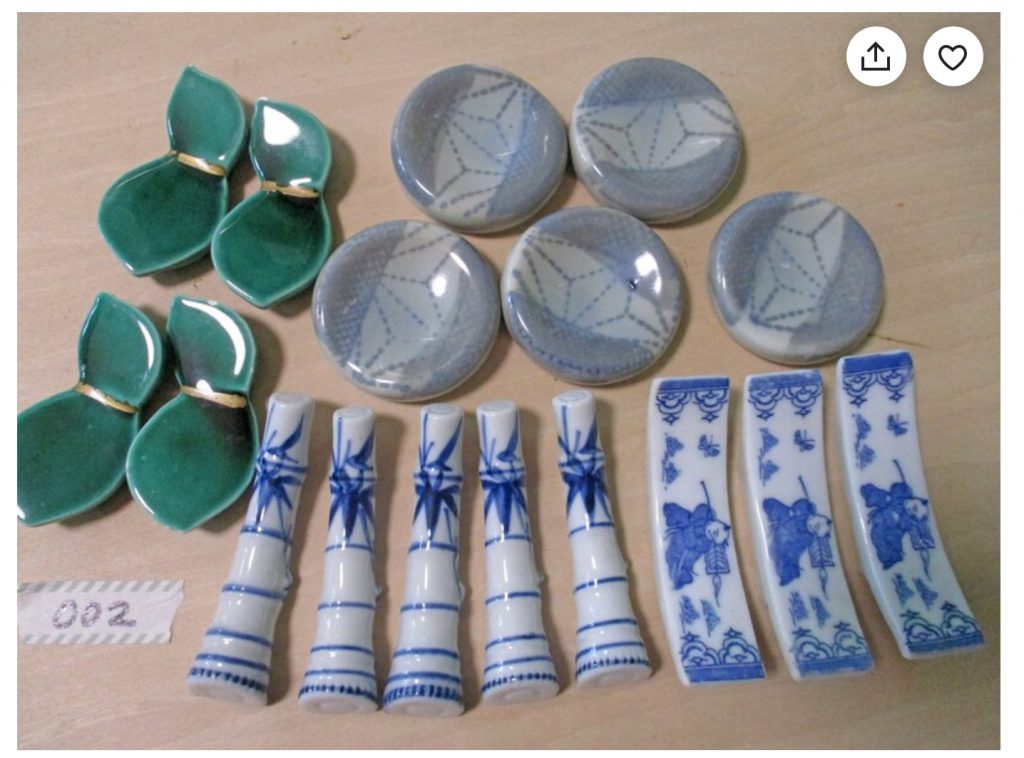

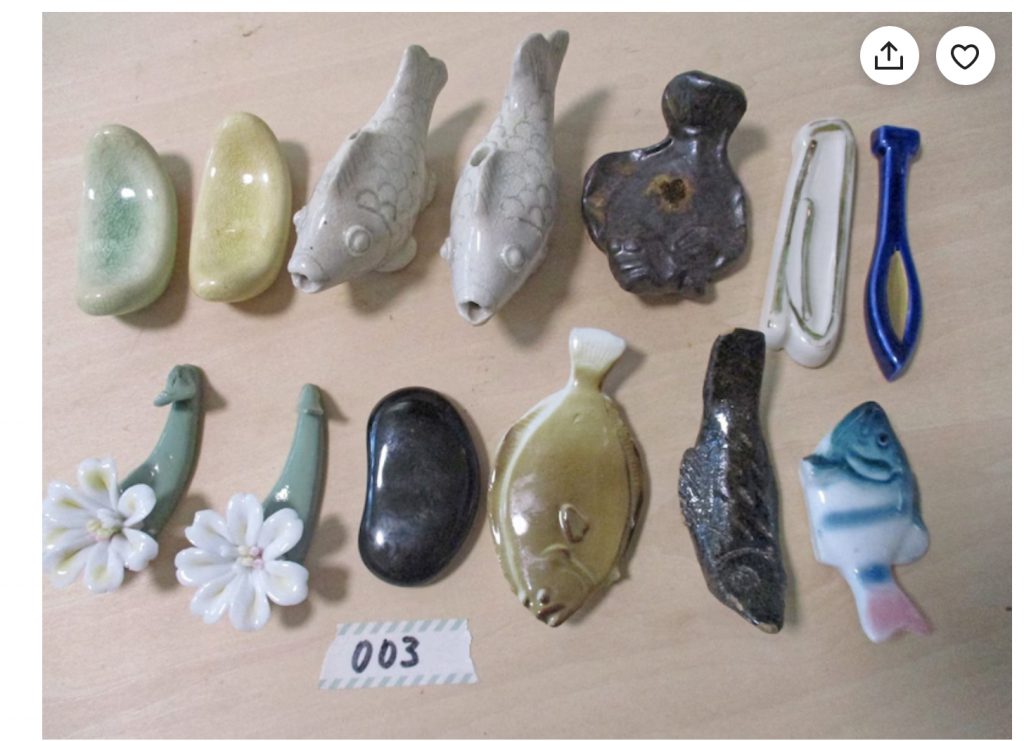

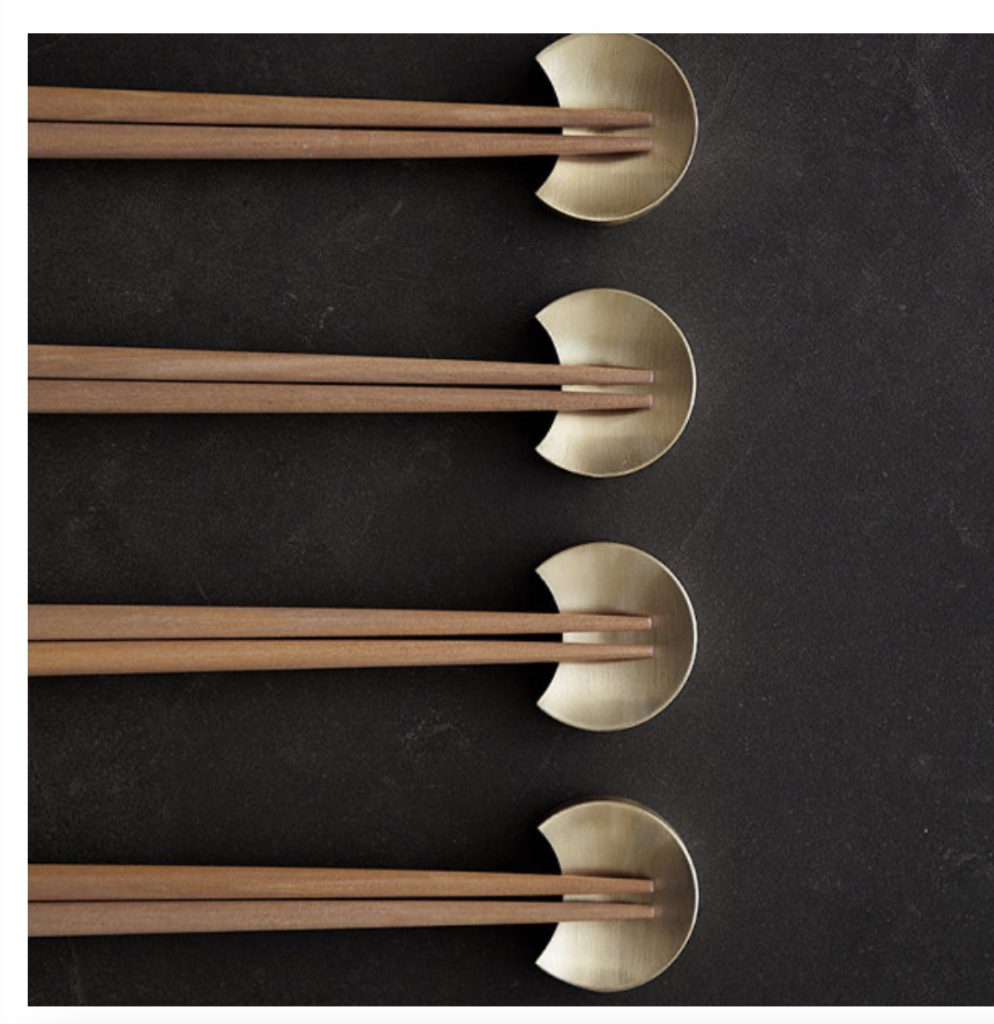
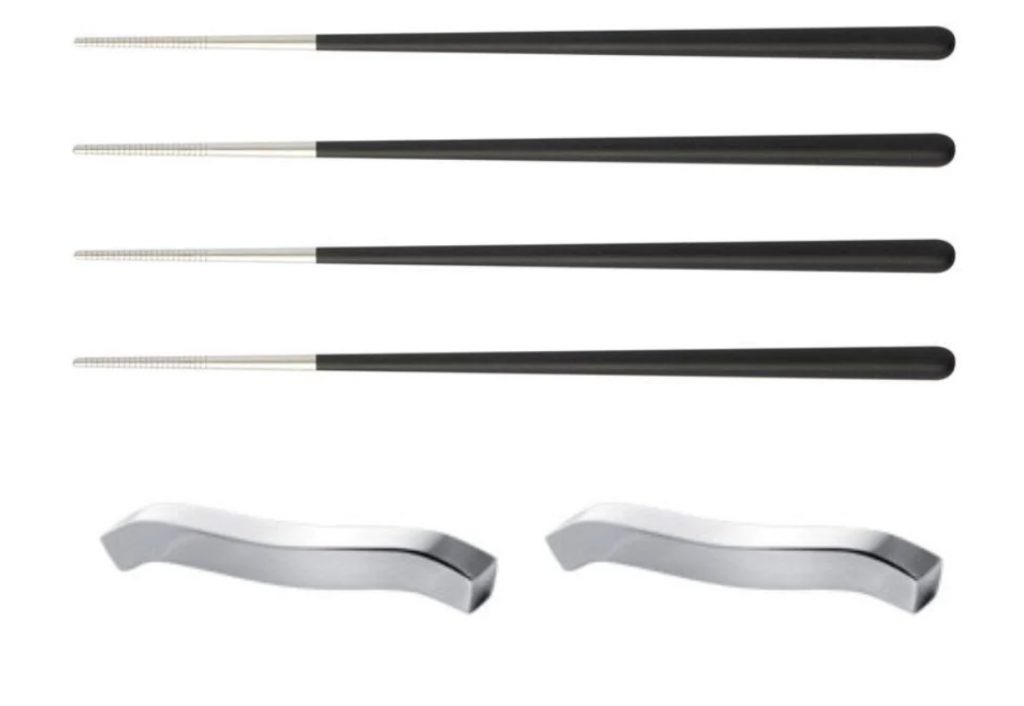
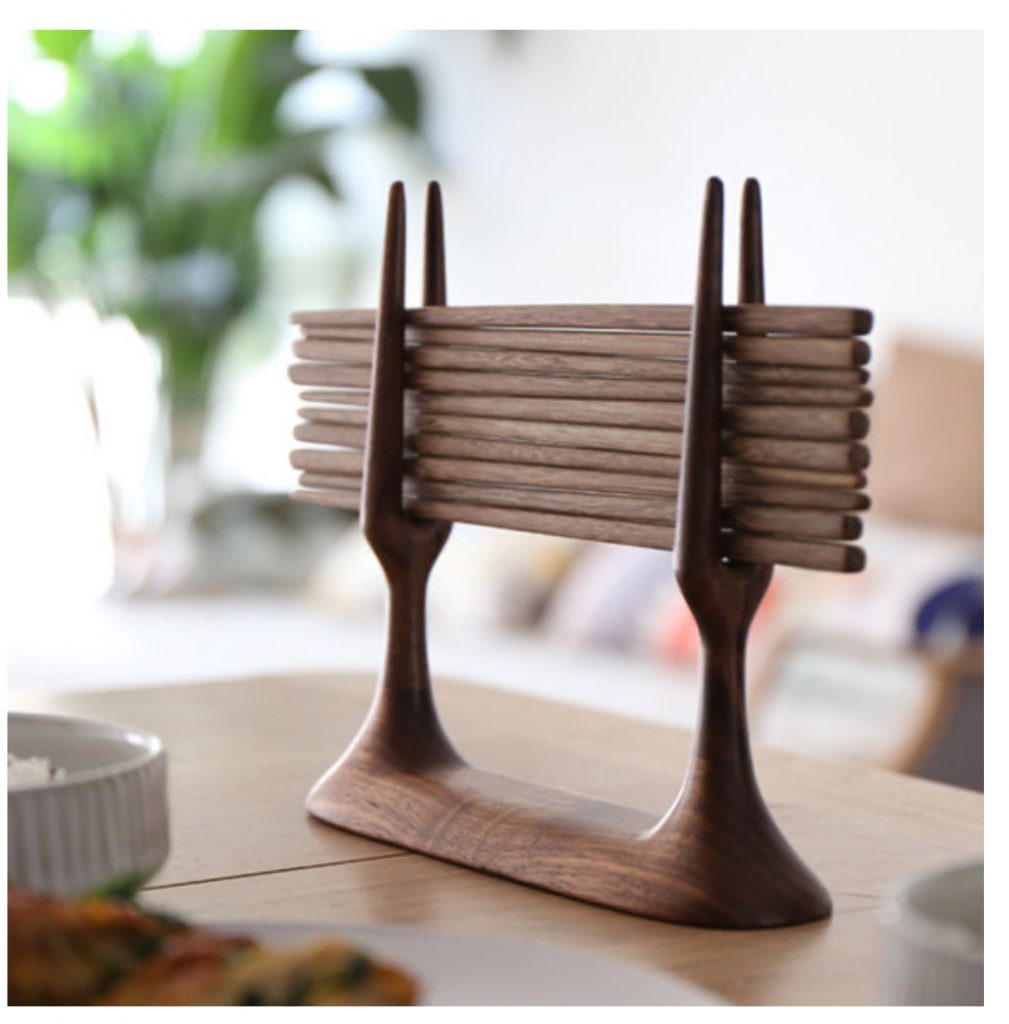
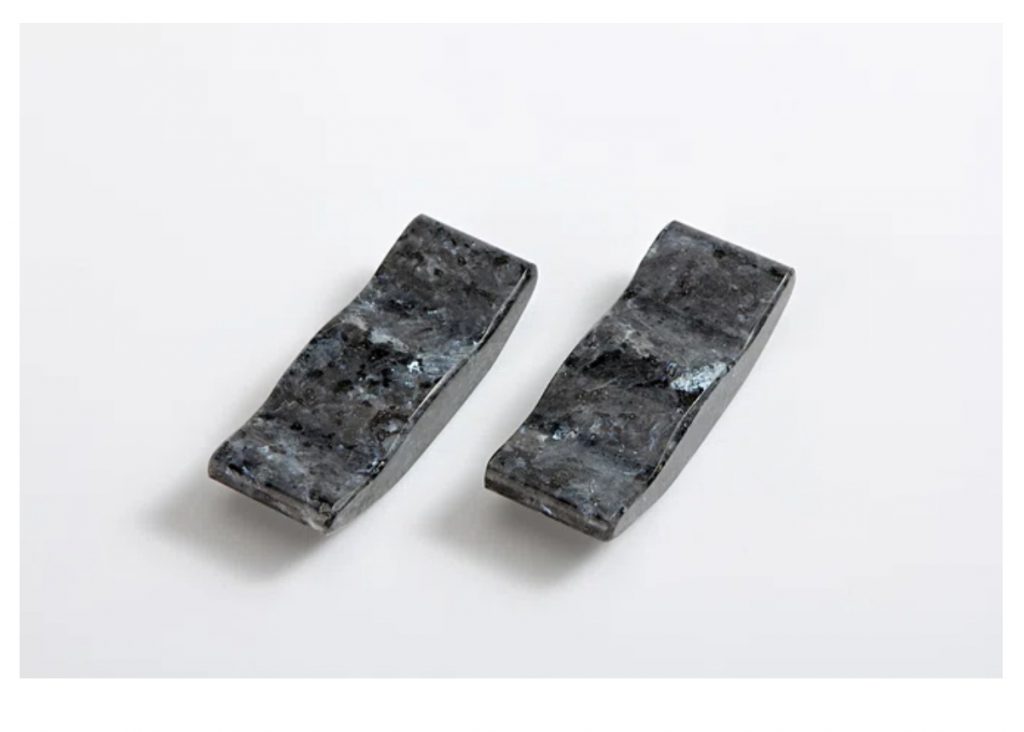


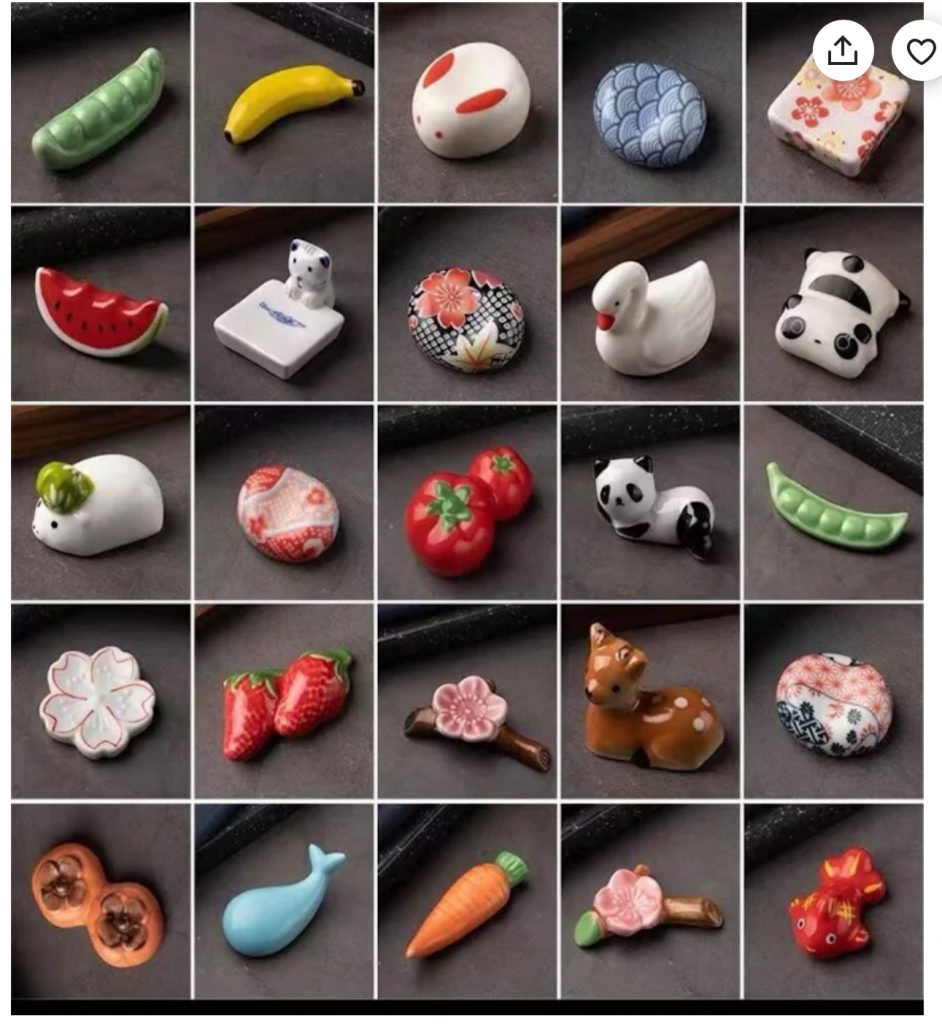
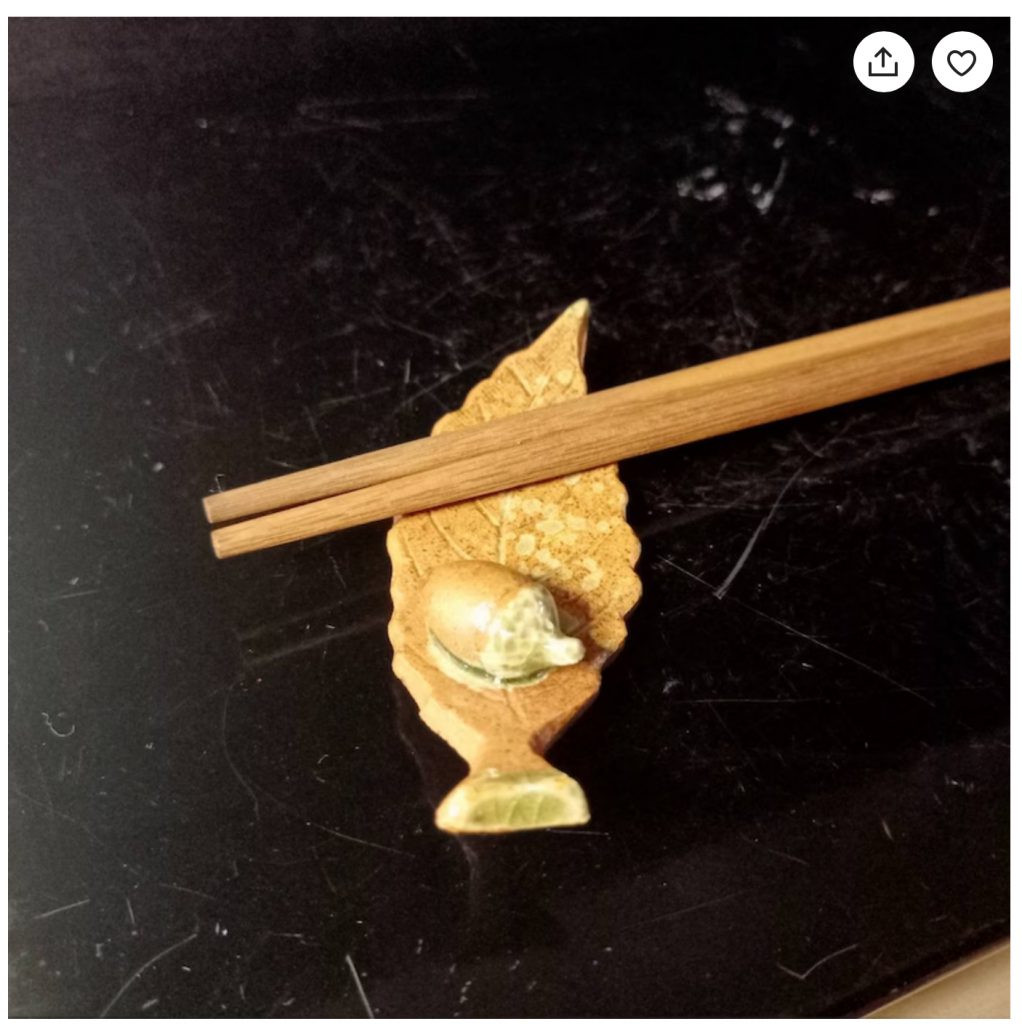
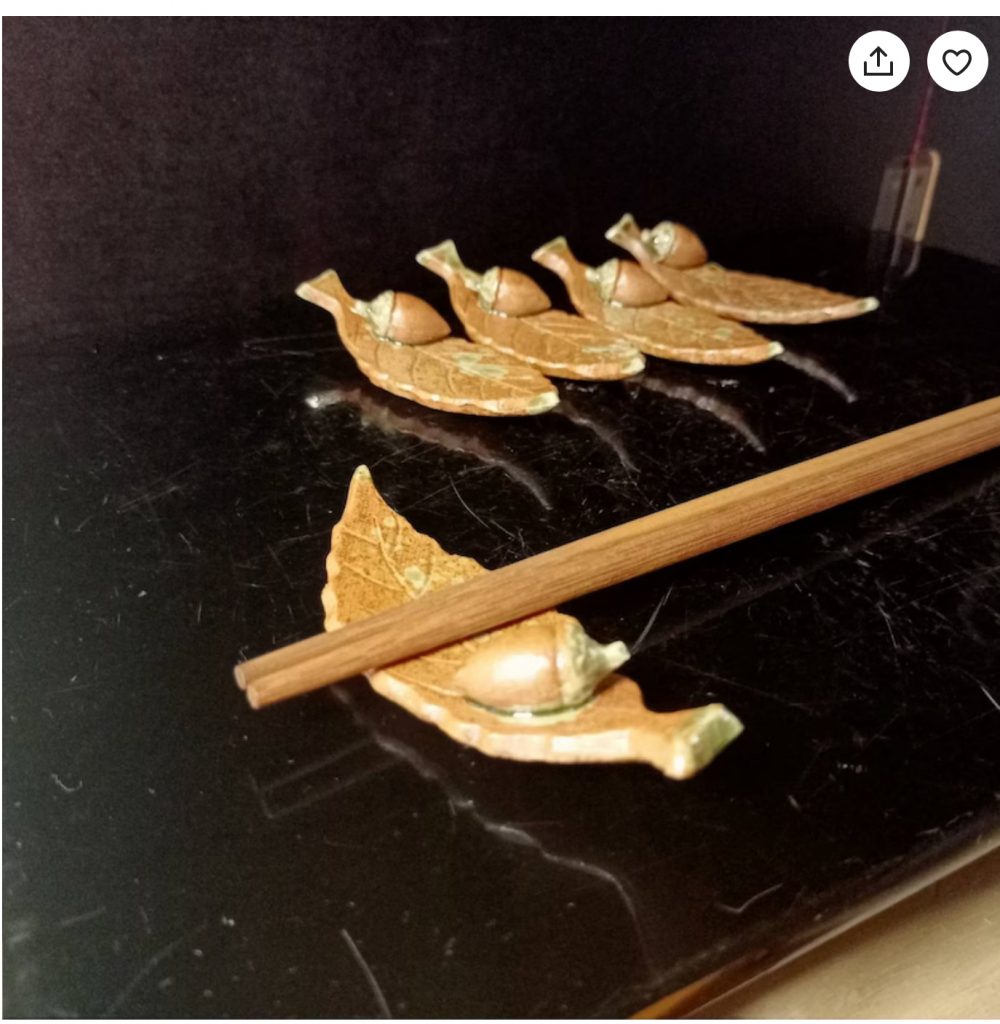
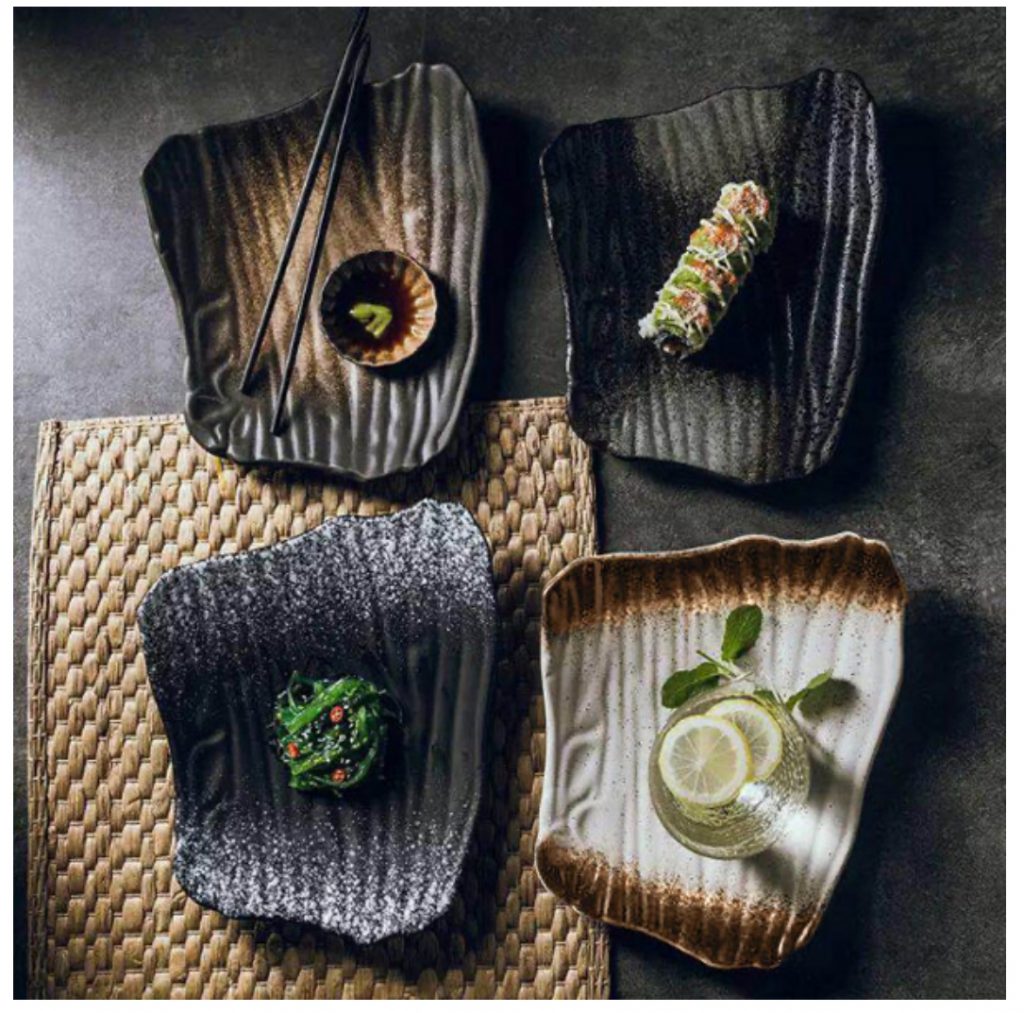
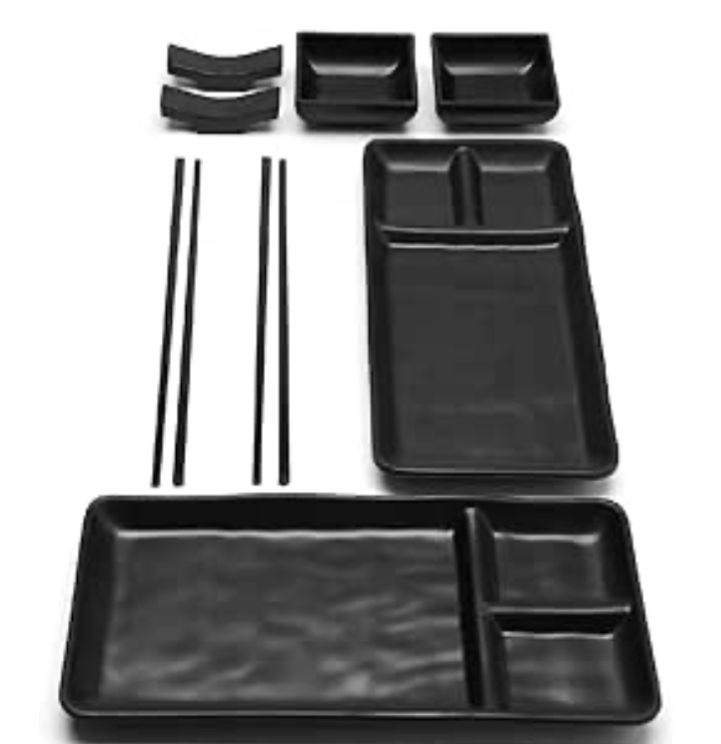
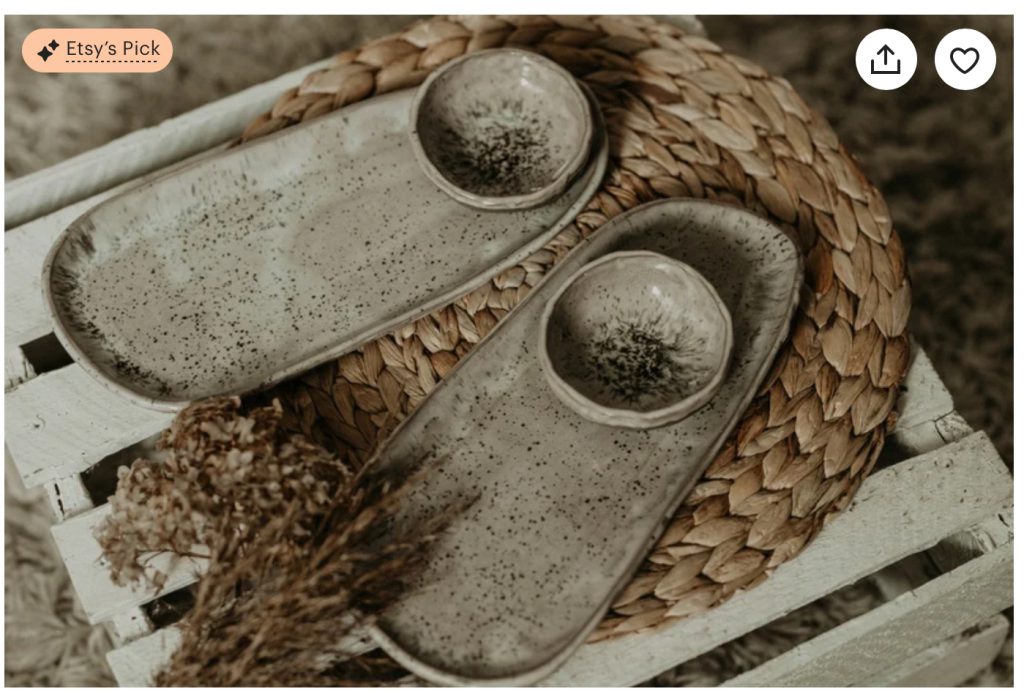

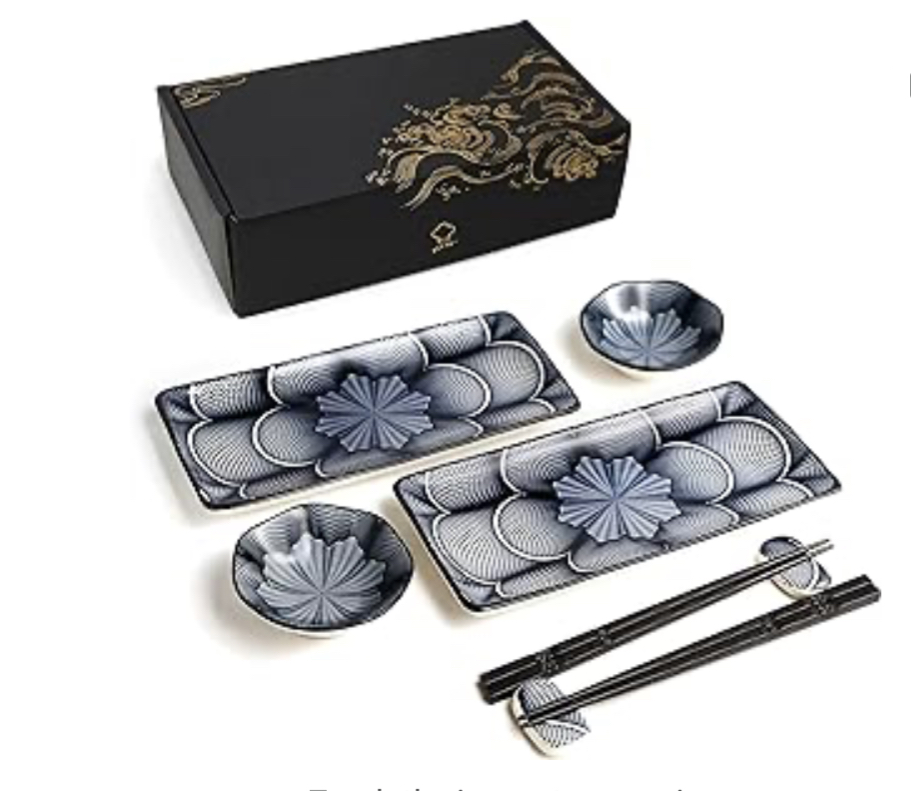

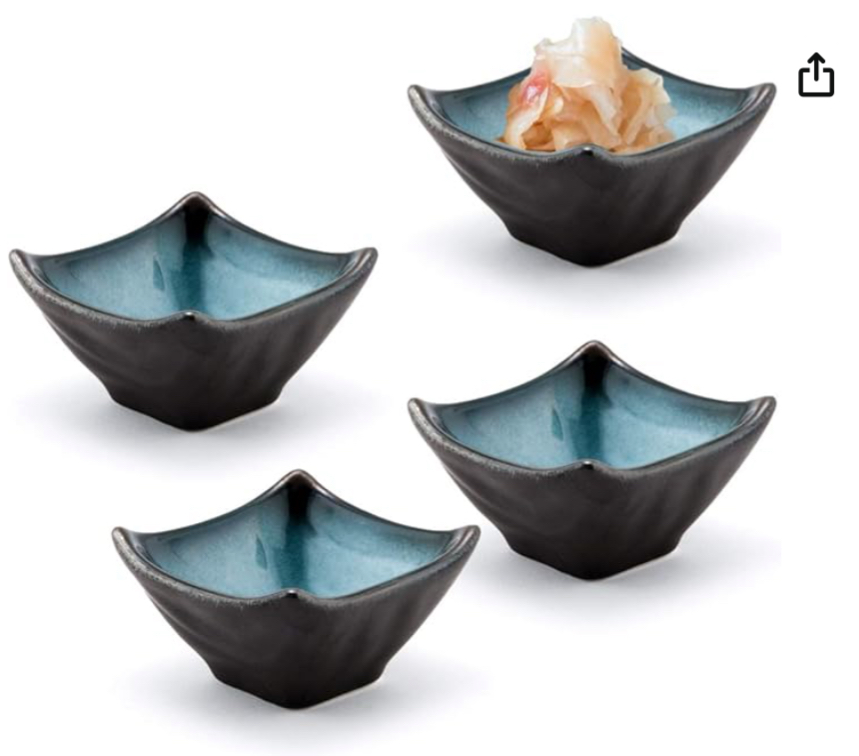
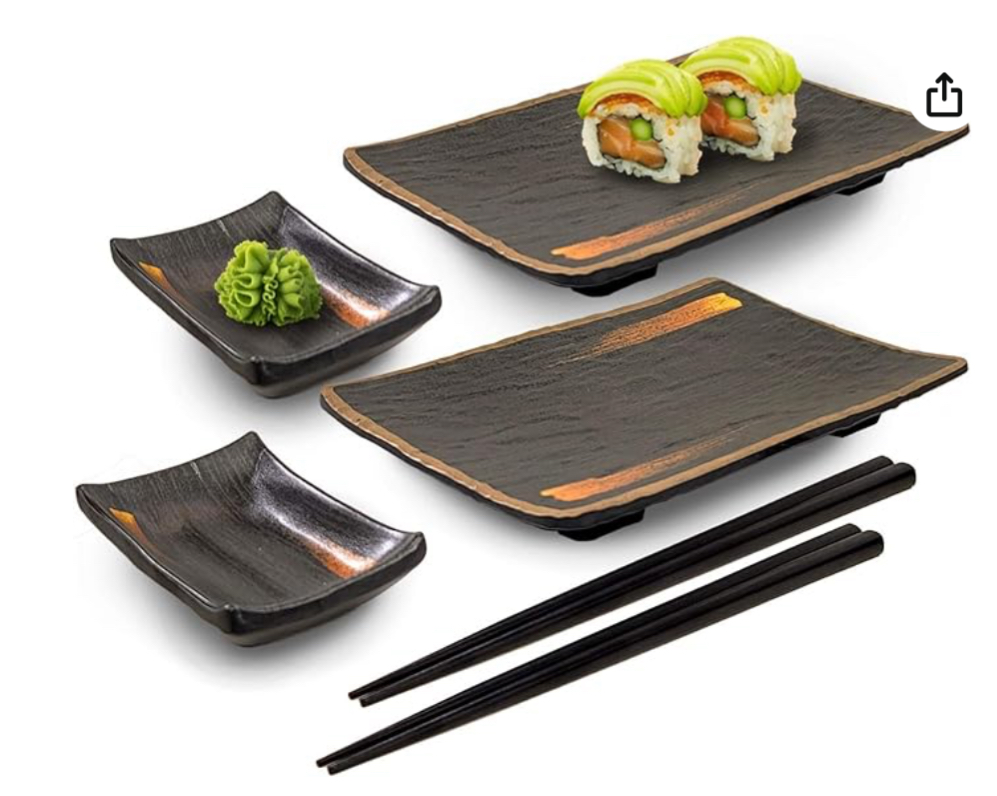
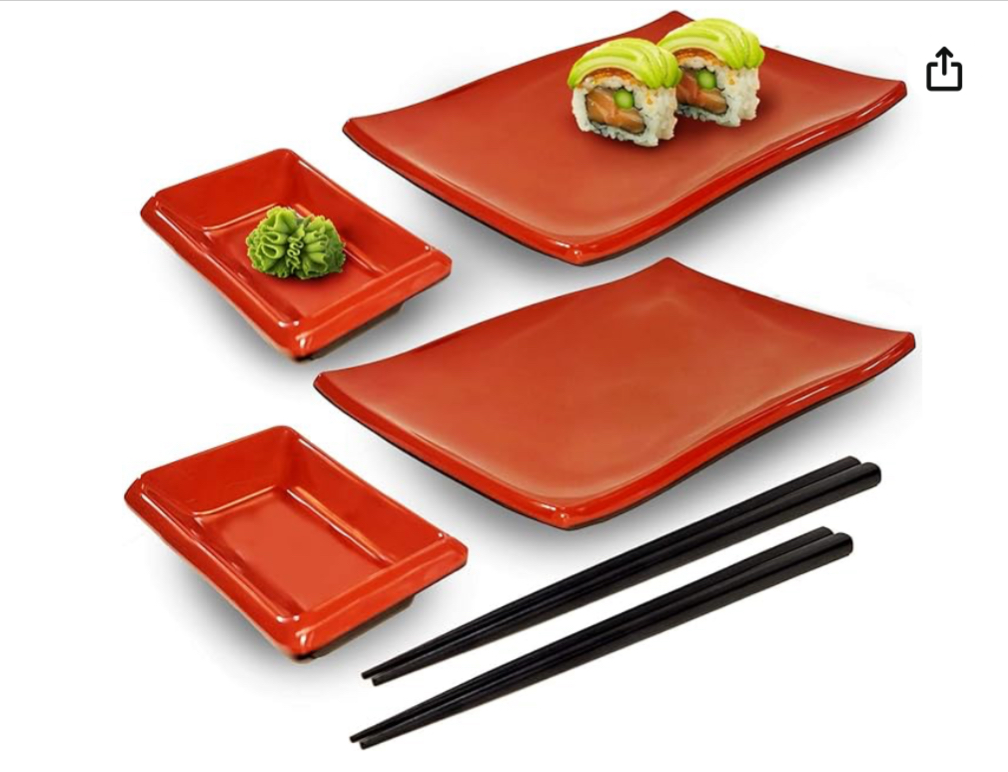
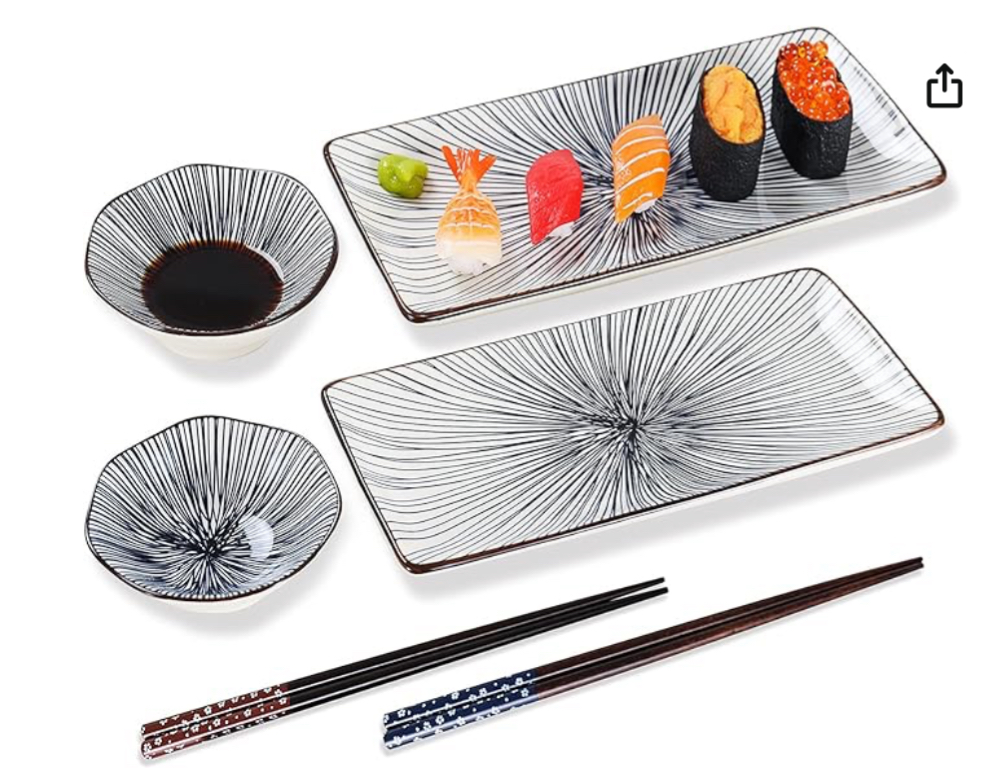
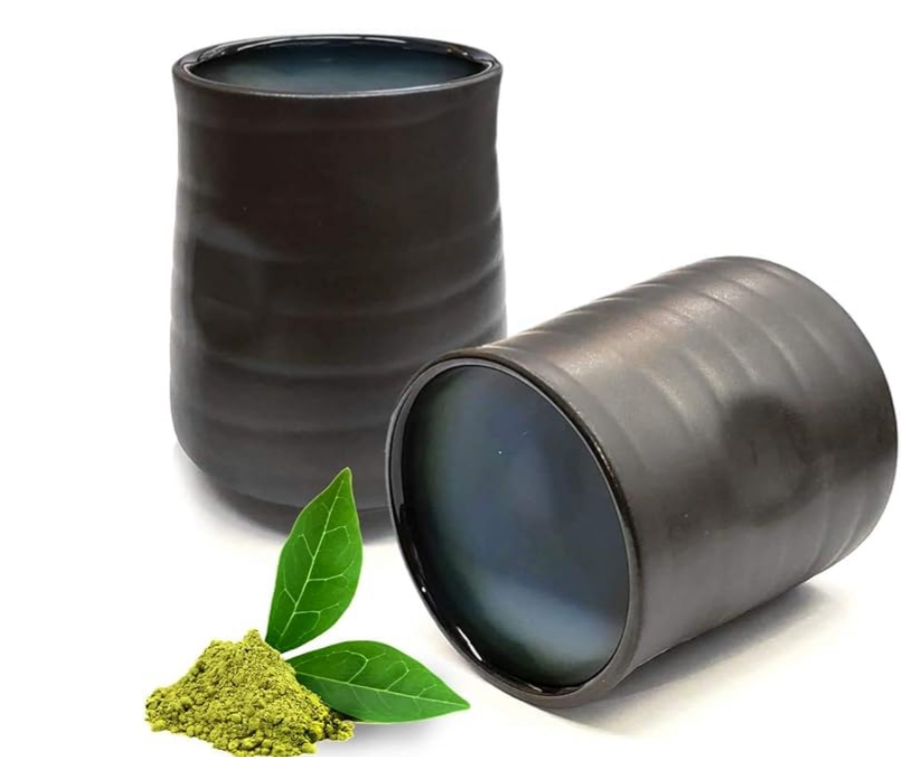

————-
A set
plates
cups
——————
Grading Rubric for High School Ceramics Lesson: Building Japanese Sushi Flatware
- Creativity (1-4 points)
- 4 points: Demonstrates exceptional creativity in design and execution, incorporating unique and thoughtful elements that enhance the cultural significance of the flatware.
3 points: Shows creativity in design and execution, with some original elements that contribute to the overall aesthetic appeal of the flatware.2 points: Lacks creativity, with designs that are uninspired or fail to enhance the cultural significance of the flatware.1 point: Minimal effort or creativity evident in the designs.
- 4 points: Demonstrates exceptional creativity in design and execution, incorporating unique and thoughtful elements that enhance the cultural significance of the flatware.
- Craftsmanship (1-4 points)
- 4 points: Displays exceptional craftsmanship, with pieces that are well-formed, structurally sound, and demonstrate a high level of technical skill.
3 points: Demonstrates solid craftsmanship, with pieces that are generally well-formed and structurally sound, though some technical skill may be lacking in areas.2 points: Shows poor craftsmanship, with pieces that are poorly formed, structurally weak, and lack technical skill.1 point: Very poor craftsmanship, with pieces that are not functional or structurally unsound.
- 4 points: Displays exceptional craftsmanship, with pieces that are well-formed, structurally sound, and demonstrate a high level of technical skill.
- Understanding of Japanese Aesthetics and Cultural Significance (1-4 points)
- 4 points: Demonstrates a deep understanding of Japanese aesthetics and cultural significance, with designs that reflect traditional elements in a meaningful and authentic way.
3 points: Shows some understanding of Japanese aesthetics and cultural significance, with designs that attempt to incorporate traditional elements but may lack depth or authenticity.2 points: Lacks understanding of Japanese aesthetics and cultural significance, with designs that are superficial or do not reflect any meaningful connection to Japanese culture.1 point: No evidence of understanding or connection to Japanese aesthetics and cultural significance.
- 4 points: Demonstrates a deep understanding of Japanese aesthetics and cultural significance, with designs that reflect traditional elements in a meaningful and authentic way.
- Participation and Engagement (1-4 points)
- 4 points: Actively participates in all aspects of the project, engages in meaningful discussions, and demonstrates a strong commitment to learning and improvement.
3 points: Participates in most aspects of the project, engages in discussions, and demonstrates a satisfactory level of commitment to learning and improvement.2 points: Demonstrates little to no participation, does not engage in discussions, and shows little commitment to learning and improvement.1 point: Completely disengaged, with no effort to participate or improve.
- 4 points: Actively participates in all aspects of the project, engages in meaningful discussions, and demonstrates a strong commitment to learning and improvement.
